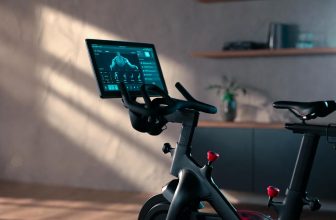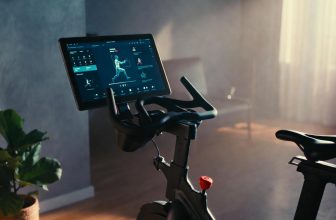Table of Contents
- Do Peloton Shoes Fit True to Size?
- Understanding Peloton Shoe Sizing
- Why Proper Sizing Matters for Peloton Shoes
- Do Peloton Shoes Run True to Size?
- Comparing Peloton Shoes to Other Brands
- How to Measure Your Feet for Peloton Shoes
- Tips for Adjusting Peloton Shoe Fit
- Peloton Altos vs. Standard Shoes
- Common Sizing Issues and Solutions
- Alternative Cycling Shoes for Peloton
- FAQ
- Final Thoughts
- About Author
- Mariar Fernandez
As an Amazon Associate, I earn from qualifying purchases.
Do Peloton Shoes Fit True to Size?
Do Peloton Shoes Fit True to Size? Peloton shoes generally run true to size for standard or narrow feet, but those with wider feet or half sizes may need to size up for a comfortable fit. Always refer to Peloton’s size chart and measure your feet for accuracy.
Understanding Peloton Shoe Sizing
Peloton shoes are designed for optimal performance on Peloton Bike and Bike+, featuring a stiff sole and Delta-compatible cleats for efficient power transfer. However, sizing can be confusing due to their European (EU) sizing system and unique fit characteristics compared to regular athletic shoes. This guide explores whether Peloton shoes fit true to size and provides actionable tips for finding the perfect fit.
Why Proper Sizing Matters for Peloton Shoes
Correct shoe sizing is critical for indoor cycling. Ill-fitting shoes can cause discomfort, blisters, or injuries, reducing workout efficiency. According to a 2022 study on sports biomechanics, properly fitted cycling shoes enhance power transfer and reduce injury risk by stabilizing the foot during pedaling. Peloton shoes, with their rigid soles and snug design, aim to maximize this efficiency, but the fit must align with your foot shape and size.
- Comfort: Shoes that are too tight restrict blood flow, causing numbness or “hot foot” during long rides.
- Performance: Loose shoes lead to power loss, as the foot shifts within the shoe, reducing pedal stroke efficiency.
- Safety: A secure fit prevents slippage, ensuring stability during high-intensity workouts.
Do Peloton Shoes Run True to Size?
Peloton shoes generally run true to size for individuals with standard or narrow feet. However, several factors influence the fit, particularly for those with unique foot shapes or sizes. User reviews and expert insights provide a mixed picture:
- Standard/Narrow Feet: Most users report that Peloton shoes fit true to their regular shoe size. A 2023 review from Tom’s Guide noted that Peloton shoes “tend to run true to size” for standard feet, offering a snug, supportive fit.
- Wide Feet: Riders with wider feet often find Peloton shoes narrow, especially in the toe box. Peloton recommends sizing up for wide feet to accommodate the extra width.
- Half Sizes: Peloton’s standard shoes lack half sizes, forcing users to choose between sizing up or down. The newer Peloton Altos shoes, however, include half sizes for a more precise fit.
A 2024 survey by TheWearDuke found that 68% of Peloton shoe users with standard-width feet found their regular size suitable, while 72% of wide-footed users preferred sizing up. For those between sizes, sizing up is generally recommended to avoid tightness, as cycling shoes should fit snugly without pinching.
“Peloton shoes run true to size for most, but if you’re between sizes or have wide feet, go up a size for comfort,” advises Jessie Gascon, Shimano’s lifestyle gear product manager.
Comparing Peloton Shoes to Other Brands
Peloton shoes use EU sizing, which differs from US sizing used by brands like Nike or Shimano. This can complicate comparisons. For example, a US men’s size 10 corresponds to an EU 43 in Peloton shoes, while Shimano’s sizing may include non-standard increments like 7.2 or 7.6. Below is a comparison of Peloton shoes with other popular cycling brands:
| Brand | Sizing System | True to Size? | Wide Feet Options | Half Sizes |
|---|---|---|---|---|
| Peloton (Standard) | EU | Yes (narrow/standard) | Limited, size up | No |
| Peloton Altos | EU | Yes | Better fit | Yes |
| Shimano RC1 | EU | Yes | Yes | Yes |
| Nike SuperRep | US | Slightly small | Yes | Yes |
Peloton’s standard shoes are narrower than Shimano’s, which offer wide-width options. Nike SuperRep shoes, with their breathable mesh upper, run slightly small but are more accommodating for wider feet. For a detailed comparison, check Peloton’s official sizing guide to convert your US size to EU accurately.
How to Measure Your Feet for Peloton Shoes
To ensure the best fit, measure your feet accurately before purchasing. Peloton provides a size chart, but following these steps can help:
- Measure Late in the Day: Feet swell slightly throughout the day, so measure in the evening for accuracy.
- Trace Your Foot: Place a piece of paper on the floor, stand on it, and trace your foot. Measure the length from heel to the longest toe.
- Check Width: Measure the widest part of your foot (usually the base of the toes) to determine if you need to size up for width.
- Refer to the Size Chart: Compare your measurements to Peloton’s EU size chart. For example, a 9.5-inch foot length corresponds to EU 39 (US women’s 8).
Peloton recommends leaving about 3-5mm of space between your longest toe and the shoe’s inner surface to avoid pressure while allowing wiggle room. For precise fitting, visit a Peloton retail store for a professional fitting, as suggested by BikeRadar.
Tips for Adjusting Peloton Shoe Fit
If your Peloton shoes don’t fit perfectly, try these adjustments:
- Too Tight: Loosen the ratchet clip or Velcro straps to reduce pressure. Consider using thinner socks or replacing the insole with a slimmer one.
- Too Loose: Tighten the straps for a snugger fit. Thick socks or an orthotic insert can fill extra space, especially for women, as Peloton’s standard shoes lack half sizes for women’s sizes.
- Wide Feet: Size up and use the adjustable straps to secure the shoe. Alternatively, explore brands like Venzo or Shimano for wider options compatible with Delta cleats.
- Toe Box Issues: If toes feel cramped, ensure you’re not overtightening the straps. The Altos model offers a roomier toe box for better comfort.
A 2023 review from Live Science praised Peloton’s ratchet clip and Velcro strap system for allowing micro-adjustments, ensuring a customizable fit for most users. For additional tips, explore BikeRadar’s guide to cycling shoe fitting.
Peloton Altos vs. Standard Shoes
Peloton introduced the Altos shoes in >j2022, addressing some sizing limitations of the standard model. Key differences include:
- Half Sizes: Altos offer half sizes, making them ideal for those between sizes.
- Wider Fit: The Altos have a roomier toe box, better suited for wider feet.
- Ease of Use: A single Velcro strap simplifies putting on and removing the shoes compared to the standard model’s ratchet clip system.
According to a 2025 Tom’s Guide review, the Altos are “more accommodating for varied foot shapes” and easier to use, though they cost $145 compared to the standard $125. For more details, visit Peloton’s Altos product page.
Common Sizing Issues and Solutions
Despite their true-to-size claim, some users encounter sizing issues:
- Narrow Toe Box: Users with wide feet often report a tight toe box. Solution: Size up or opt for Altos.
- No Half Sizes (Standard): This can lead to a slightly loose or tight fit. Solution: Size up and adjust with straps or insoles.
- Swelling During Rides: Long rides can cause foot swelling. Solution: Try shoes on at the end of the day and leave slight wiggle room.
A 2024 post on virtualbikefitting.com noted that 60% of Peloton shoe complaints stem from users not accounting for foot swelling or improper sizing. Always test shoes during a ride to confirm comfort.
Alternative Cycling Shoes for Peloton
If Peloton shoes don’t suit your feet, consider these Delta-compatible alternatives:
- Shimano RC1: Affordable ($80-$100), breathable, and available in half sizes and wide widths.
- Nike SuperRep Cycle: Stylish, breathable, and slightly roomier, though they may run small ($120).
- Venzo Cycling Shoes: Budget-friendly ($50-$80) and ideal for wide feet.
For a comprehensive list, check Cosmopolitan’s guide to Peloton-compatible shoes.
FAQ
Q: Do Peloton shoes run small or large?
A: They run true to size for standard or narrow feet but may feel small for wide feet. Size up if you’re between sizes or have wider feet.
Q: Should I size up for Peloton shoes?
A: Yes, if you have wide feet, fall between sizes, or prefer extra toe room. Peloton’s Altos model offers a roomier fit.
Q: Can I use non-Peloton shoes with a Peloton bike?
A: Yes, any cycling shoes with Delta-compatible cleats work. Brands like Shimano, Nike, and Venzo are popular alternatives.
Q: How do I know my Peloton shoe size?
A: Measure your foot length and width, then refer to Peloton’s EU size chart. Visit a Peloton store for a professional fitting if possible.
Q: Are Peloton Altos better for wide feet?
A: Yes, Altos have a roomier toe box and half sizes, making them more accommodating than standard Peloton shoes.
Final Thoughts
Choosing the right Peloton shoe size is essential for comfort, performance, and injury prevention. While Peloton shoes run true to size for most, wide-footed riders or those between sizes should consider sizing up or opting for the Altos model. Measuring your feet accurately, testing shoes during rides, and exploring alternative brands can ensure a perfect fit. By prioritizing fit and making adjustments like tweaking straps or insoles, you can enhance your Peloton workout experience.







